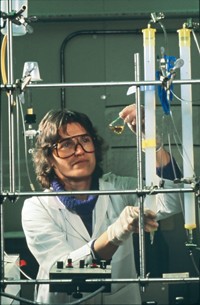Advertisement
Grab your lab coat. Let's get started
Welcome!
Welcome!
Create an account below to get 6 C&EN articles per month, receive newsletters and more - all free.
It seems this is your first time logging in online. Please enter the following information to continue.
As an ACS member you automatically get access to this site. All we need is few more details to create your reading experience.
Not you? Sign in with a different account.
Not you? Sign in with a different account.
ERROR 1
ERROR 1
ERROR 2
ERROR 2
ERROR 2
ERROR 2
ERROR 2
Password and Confirm password must match.
If you have an ACS member number, please enter it here so we can link this account to your membership. (optional)
ERROR 2
ACS values your privacy. By submitting your information, you are gaining access to C&EN and subscribing to our weekly newsletter. We use the information you provide to make your reading experience better, and we will never sell your data to third party members.
Environment
Re: “Trading sleep for results”
February 13, 2017
| A version of this story appeared in
Volume 95, Issue 7
Chemjobber’s first Bench & Cubicle column awoke many readers, who took to C&EN’s website to comment. Here is only a small sampling; head online to add your voice.
Working late into the night in the isolation of sparsely populated laboratories, coupled with lack of sleep and fatigue, is a formula for a safety disaster. My first thought, while reading this article, was that safety should be the first reason for limiting work hours, so the researcher can return home in the same condition as he or she arrived at the lab.
Bill Gorman
Industrial process chemistry operators work 12-hour shifts safely. So long hours aren’t necessarily a formula for a safety disaster.
drwebb
As a researcher in industry, I think that I am well-placed to respond. Industrial process operators are (or should be) working with well-known, highly developed processes. Researchers, by definition, typically will not be. Further, despite thorough risk assessment, they are venturing into at least the partially unknown. It’s more correctly the lack of sleep, leading to slow or mistaken response to the unexpected or unforeseen, that is the recipe for potential disaster. Lack of supervision, support, or rapid succor for lone workers does indeed add to the problem.
Stephen Cook
Long hours are important and necessary, because many experiments just don’t work the first (or the second time). There is a correlation between working hard and getting results. However, I have found that self-knowledge can help alleviate some problems. When are you the most alert? If you are a night person, then don’t drag yourself to work at 8:30 AM when you know that you will just sit and stare at your desk for an hour before you really do anything. Allow yourself to sleep in, and then work until late evening. (Of course, these things are easier said than done, and require an accommodating family.) If you are a morning person, come in ready to work, nice and early; and allow yourself to go home at 5 PM for dinner and exercise, particularly if you can see that you got a good day’s work done.
Patti LiWang
Corrections:
Jan. 23, page 19: In the feature story about China’s air pollution, the unit in the graphic giving the measurement of particulates less than 2.5 μm in diameter (PM 2.5) was incorrectly stated as mg per m3 of air. The measurement is μg per m3 of air. The story also incorrectly made a reference to an air pollutant as carbon black. The pollutant is black carbon.
Jan. 30, page 34: The ACS News story naming 2016–17 Project SEED Scholars gave the wrong university for Ullyot Scholar Jessica Chung. She is currently attending the University of Portland, not Harvard University.
Feb. 6, page 26: The cover story, “All the whey,” incorrectly stated that bacteria in anaerobic digesters convert acid whey into methane. Methanogenic archaea produce the methane.



Join the conversation
Contact the reporter
Submit a Letter to the Editor for publication
Engage with us on Twitter